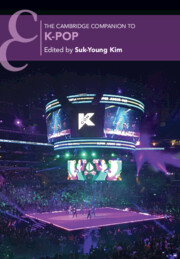Book contents
- The Cambridge Companion to K-Pop
- Cambridge Companions to Music
- The Cambridge Companion to K-Pop
- Copyright page
- Contents
- Figures
- Tables
- Contributors
- Acknowledgments
- Notes to Readers
- Introduction
- Part I Genealogies
- Part II Sounding Out K-Pop
- 3 Finding the K in K-Pop Musically
- 4 Recording the Soundscape of K-Pop
- Part III Dancing to K-Pop
- Part IV The Making of Idols
- Part V The Band That Surprised the World
- Part VI Circuits of K-Pop Flow
- Index
- References
3 - Finding the K in K-Pop Musically
A Stylistic History
from Part II - Sounding Out K-Pop
Published online by Cambridge University Press: 02 March 2023
- The Cambridge Companion to K-Pop
- Cambridge Companions to Music
- The Cambridge Companion to K-Pop
- Copyright page
- Contents
- Figures
- Tables
- Contributors
- Acknowledgments
- Notes to Readers
- Introduction
- Part I Genealogies
- Part II Sounding Out K-Pop
- 3 Finding the K in K-Pop Musically
- 4 Recording the Soundscape of K-Pop
- Part III Dancing to K-Pop
- Part IV The Making of Idols
- Part V The Band That Surprised the World
- Part VI Circuits of K-Pop Flow
- Index
- References
Summary
As the popularity of K-pop has grown around the globe, the number and scope of K-pop studies have also expanded. While many have provided important insights into socioeconomic aspects of K-pop, the music itself has rarely been at the center of discussion. The purpose of this chapter is to help fill the gap by examining the sound of K-pop, focusing on its musical elements such as melody, rhythm, and instrumentation. This approach involves close listening and reading of select songs covering various stylistic genres and analyzing their sound using the language of music theory. By so doing, this study will identify and offer an understanding of common musical structures used in K-pop songs. Furthermore, the chapter attempts to respond to the question asked most frequently in the author’s K-pop class: How is K-pop different from popular music of the West? To that end, a comparative analysis is conducted between K-pop songs and Western pop music. Among the styles of songs examined are bubblegum popular music, ballads, and songs that quote Korean traditional music, the types of music that are most revealing in addressing the question of distinctiveness of K-pop songs.
- Type
- Chapter
- Information
- The Cambridge Companion to K-Pop , pp. 51 - 72Publisher: Cambridge University PressPrint publication year: 2023



